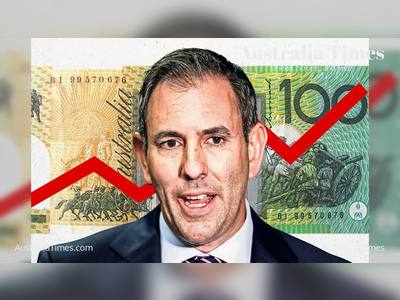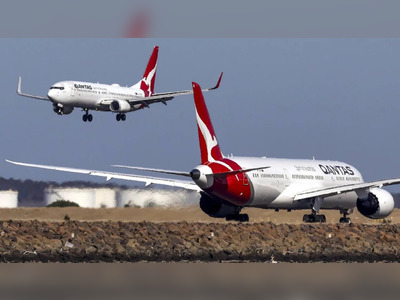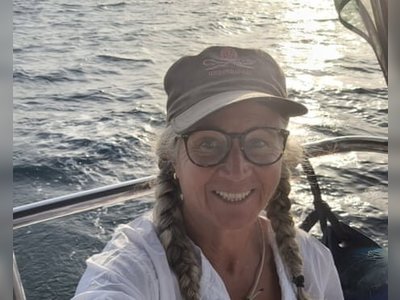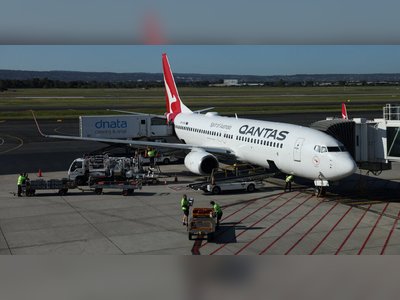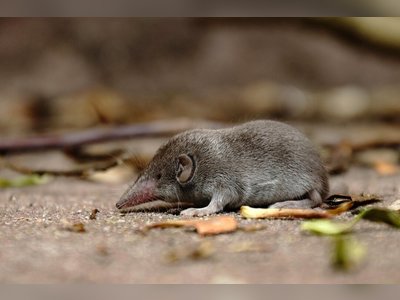South Australia Unveils $50 Dining-Backed Vouchers to Revive Coastal Tourism Amid Algal Bloom Crisis
State launches A$15 million “eat out” stimulus program as toxic algal bloom devastates marine life and tourism sectors
South Australia has launched a bold dining incentive aimed at reviving its battered coastal tourism sector as a pervasive algal bloom continues to inflict ecological and economic damage.
Under the A$15 million scheme unveiled by Premier Peter Malinauskas, 60,000 dining cashback vouchers will be distributed each month from November through a public ballot.
The scheme promises that for every A$100 spent at eligible restaurants in affected communities, diners will receive A$50 back.
Malinauskas presented the rollout alongside federal Environment Minister Murray Watt at the Bacchus Bar in Henley Beach, describing the policy as “unique, new and a big investment” intended to spark demand where visitation has plunged ahead of the summer tourist season.
The vouchers will be open exclusively to South Australians.
Local restaurateurs welcomed the plan.
Jodi Dimond, proprietor of Bacchus Bar, said she believed it would “bring people from the other side of town,” delivering much-needed patronage to coastal businesses struggling with depressed traffic.
The dining program forms part of a broader A$28 million support package jointly funded by the South Australian and federal governments to address the algal bloom crisis.
That package already includes grants of up to A$10,000 for small businesses and up to A$100,000 for commercial fisheries, as well as deferred licence fees and other relief measures for affected operators.
Meanwhile, councils along the coast have begun large-scale cleanups; in one recent week, Charles Sturt Council removed approximately three tonnes of dead marine life from beaches.
The bloom, first observed in March, has now impacted roughly thirty per cent of South Australia’s coastline.
It has been linked to the deaths of thousands of marine animals, sharply reduced seafood sales, and serious declines in tourism bookings.
Port Lincoln mayor Diana Mislov described deep disruption in her region: squid have not appeared in local bays since April, forcing fishers to travel hundreds of kilometres at great cost.
Science and government officials continue to grapple with the bloom’s origins and trajectory.
Marine biologist Shauna Murray advised that researchers and policymakers face a landscape of uncertainty, likening the challenge to the early, confused days of the COVID-19 pandemic.
With the summer season looming, the state government is preparing a “Summer Plan” to coordinate responses and effects across tourism, fisheries, public messaging, and environmental management.
Local industry leaders are calling for even more support and incentives beyond the dining vouchers.
Additional mitigation efforts include a pilot “bubble curtain” barrier in Spencer Gulf designed to protect critical cuttlefish breeding grounds, where up to 50,000 to 80,000 eggs may otherwise be at risk if the bloom encroaches.
The curtain, funded by state and federal authorities, represents one of the more experimental responses deployed to protect marine species under severe pressure.
As the crisis evolves, South Australia’s leadership is under growing pressure to balance immediate economic stimulus with long-term ecological and sector resilience.
Under the A$15 million scheme unveiled by Premier Peter Malinauskas, 60,000 dining cashback vouchers will be distributed each month from November through a public ballot.
The scheme promises that for every A$100 spent at eligible restaurants in affected communities, diners will receive A$50 back.
Malinauskas presented the rollout alongside federal Environment Minister Murray Watt at the Bacchus Bar in Henley Beach, describing the policy as “unique, new and a big investment” intended to spark demand where visitation has plunged ahead of the summer tourist season.
The vouchers will be open exclusively to South Australians.
Local restaurateurs welcomed the plan.
Jodi Dimond, proprietor of Bacchus Bar, said she believed it would “bring people from the other side of town,” delivering much-needed patronage to coastal businesses struggling with depressed traffic.
The dining program forms part of a broader A$28 million support package jointly funded by the South Australian and federal governments to address the algal bloom crisis.
That package already includes grants of up to A$10,000 for small businesses and up to A$100,000 for commercial fisheries, as well as deferred licence fees and other relief measures for affected operators.
Meanwhile, councils along the coast have begun large-scale cleanups; in one recent week, Charles Sturt Council removed approximately three tonnes of dead marine life from beaches.
The bloom, first observed in March, has now impacted roughly thirty per cent of South Australia’s coastline.
It has been linked to the deaths of thousands of marine animals, sharply reduced seafood sales, and serious declines in tourism bookings.
Port Lincoln mayor Diana Mislov described deep disruption in her region: squid have not appeared in local bays since April, forcing fishers to travel hundreds of kilometres at great cost.
Science and government officials continue to grapple with the bloom’s origins and trajectory.
Marine biologist Shauna Murray advised that researchers and policymakers face a landscape of uncertainty, likening the challenge to the early, confused days of the COVID-19 pandemic.
With the summer season looming, the state government is preparing a “Summer Plan” to coordinate responses and effects across tourism, fisheries, public messaging, and environmental management.
Local industry leaders are calling for even more support and incentives beyond the dining vouchers.
Additional mitigation efforts include a pilot “bubble curtain” barrier in Spencer Gulf designed to protect critical cuttlefish breeding grounds, where up to 50,000 to 80,000 eggs may otherwise be at risk if the bloom encroaches.
The curtain, funded by state and federal authorities, represents one of the more experimental responses deployed to protect marine species under severe pressure.
As the crisis evolves, South Australia’s leadership is under growing pressure to balance immediate economic stimulus with long-term ecological and sector resilience.
AI Disclaimer: An advanced artificial intelligence (AI) system generated the content of this page on its own. This innovative technology conducts extensive research from a variety of reliable sources, performs rigorous fact-checking and verification, cleans up and balances biased or manipulated content, and presents a minimal factual summary that is just enough yet essential for you to function as an informed and educated citizen. Please keep in mind, however, that this system is an evolving technology, and as a result, the article may contain accidental inaccuracies or errors. We urge you to help us improve our site by reporting any inaccuracies you find using the "Contact Us" link at the bottom of this page. Your helpful feedback helps us improve our system and deliver more precise content. When you find an article of interest here, please look for the full and extensive coverage of this topic in traditional news sources, as they are written by professional journalists that we try to support, not replace. We appreciate your understanding and assistance.
